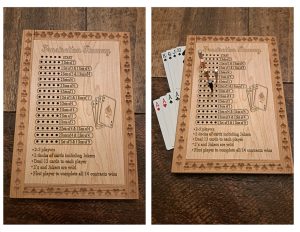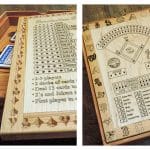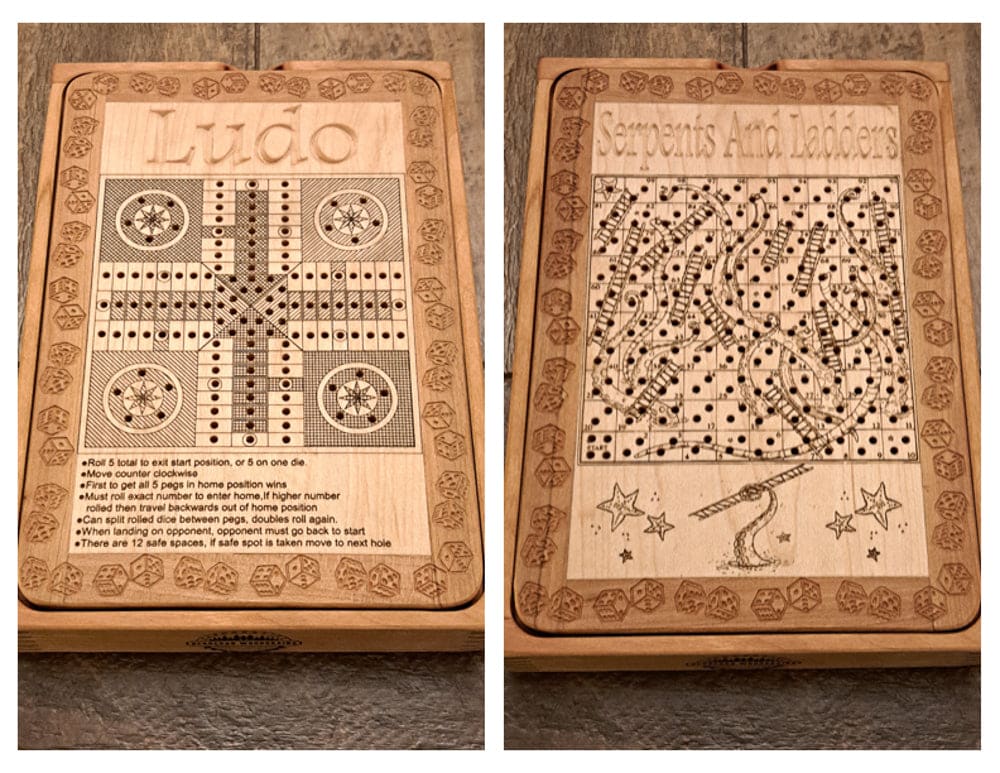Free Shipping On Orders Over $150 To Canada And US
Frustration Rummy Rules
Frustration Rummy Rules
Set Up:
13 Cards to each player
Place the rest of the deck in the center of the table to make a draw deck and flip one card over to form a discard pile.
Jokers and 2’s are wild cards. Aces can be high or low for Runs
Play:
All Players must attempt to complete the 14 contracts in order of how they are listed. A player may only complete one contract per round.
Starting with the player to the left of the dealer and continuing clockwise each player may either draw the top card of the deck or the top card of the discard pile.If the deck runs out reshuffle the discard pile except for the top card and make a new draw deck
The Player who played first will become the dealer for the next round
If a Player has all of the cards to complete a contract they may lay them down on their turn.
You may never have more wild cards then natural cards in a contract set or run. For example for a set of 3 you could have two fives and Joker but not 2 Jokers and a 5. 2’s are always wild. If you were making a run of A, 2, 3, 4 the 2 would be considered wild for purposes of not more wild than natural cards.
For Runs they must all be of the same suit.
When you have completed all your moves you must discard a card.
Ending a Round:
A Round ends when one player goes out. They have completed their contract and laid down all their cards and have one left for a final discard.
After a player has completed their contract they can get rid of the extra cards in their hands by adding to the table.
They may make extra sets of 3 or more. They may make extra runs of 4 or more
They may add to an existing set of their own or of an opponent that has already completed their contract. Example: Player 1 has a 5 in their hand, Player 2 has completed their contract and has a set of 5’s on the table. Player 1 may add his 5 to players 2’s set of 5’s.
They may add to an existing run of their own or of an opponent that has already completed their contract.
Example: Player 1 has the 5 of Diamonds, Player 2 has a run of the 6,7,8,9 and 10 of Diamonds. Player 1 may add his 5 of Diamonds to the end of the Player 2’s run.
They may play wild cards to any sets or runs as long as it does break the rule of more wild cards to natural cards for the run or set.
Once a player has gone out the round ends. Any players that have met their contract move on to the next contract. Any players that have not met their contract remain on their current contract.
First player to go out on Contract 14 wins.





